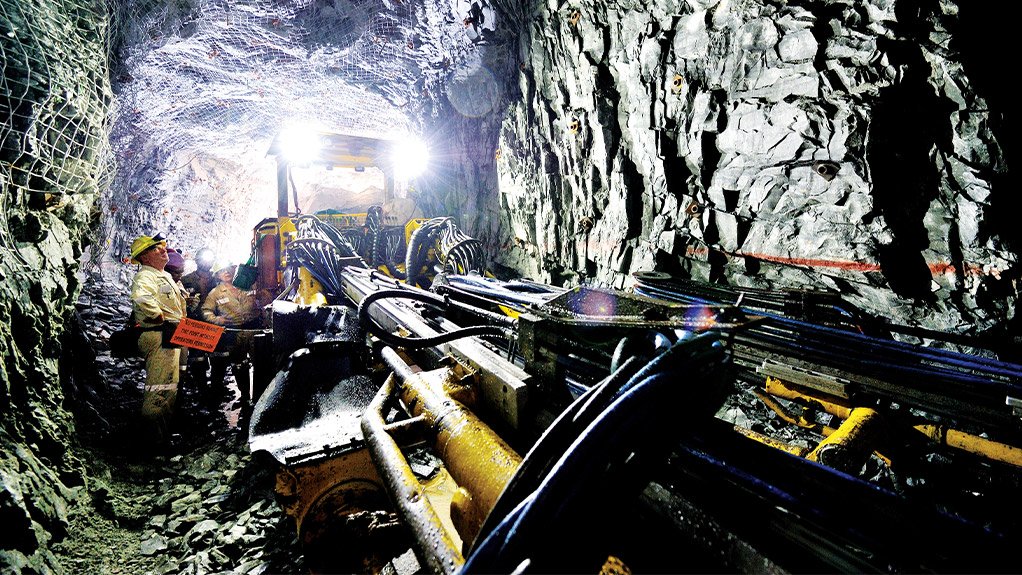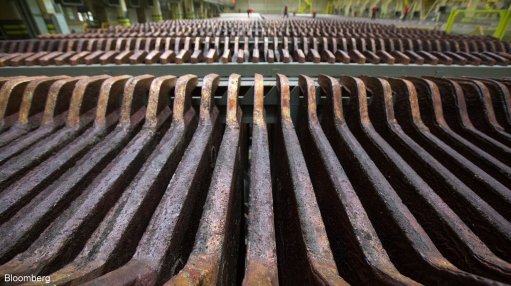Declining gold industry needs discovery, innovation



CHALLENGING ENVIRONMENT The local gold mining industry continues to face significant challenges
DEPTH INCREASE Increasing depth of operations and declining grades have contributed to a consistent decline in gold production and productivity
The gold mining industry has played a significant role in South Africa for 130 years and continues to play a valuable role, but, this is an industry that is mature, and in the absence of major new discoveries or innovative means to reach and mine its deep and otherwise more marginal reserves, local gold production will continue to decline, says Minerals Council South Africa spokesperson Charmane Russell.
She tells Mining Weekly that the industry continues to face significant challenges, such as a volatile gold price and the rand:dollar exchange rate, which affect long-term planning, investment and production. Continually rising input costs, including those of electricity, wages, water and materials, have also had a significant impact on the industry’s margins.
Further, operational challenges, such as increasing depth of operations, ageing infrastructure, greater distances to working areas, reduced flexibility and declining grades, have contributed to a consistent decline in production and productivity.
Policy and regulatory uncertainty have not only impacted negatively on investment confidence but also increased the cost of capital.
However, Russell states that the gold industry continues to contribute to the lives of employees, communities and the country through jobs and benefits, education and training, taxes and royalties, as well as investment in social projects and infrastructure.
Last year, the industry produced 132.2 t of gold, sold R69.9-billion of gold, employed about 101 000 employees directly, paid employees R26.5-billion in salaries and the State R590-million in royalties.
Solutions
Russell suggest that industry needs to unlock potential through increased research and development (R&D) and the rapid introduction of modern techniques – such as more precise rock drilling, which results in less rock waste to surface – to sustain production by improving productivity, which counters lower grades of ore.
Other solutions include stabilising unsustainable rises in administered prices, which represent 50% of intermediary costs for mines and are completely out of mining companies’ control, as well as stabilising State-owned power utility Eskom financially and operationally, which Russell notes the industry is prepared to assist with.
Further, policy and regulatory certainty, and competitiveness, should be improved to encourage new investment in gold mining, she adds.
“What is needed is a conducive environment that encourages capital investment in existing operations to extend their lives, as well as exploration and increased R&D to find innovative ways of accessing orebodies that were previously inaccessible and mine them safely and cost effectively.”
She emphasises that there is an urgent need to modernise, as mining depths increase and conditions become more challenging, adding that modernisation is not simply mechanisation.
“It is a process of transitioning and transforming the mining industry of the past to that of the future.”
Modernisation will be driven by technological innovation, which, in turn, must be driven by R&D. Modernisation could save about 200 000 jobs by 2030, affecting two-million dependants, says Russell.
She notes that the Minerals Council has conducted extensive research into mine modernisation and has developed a strategic framework to guide the sector in achieving its objectives. Key enablers are R&D, mining and manufacturing, and sustainability.
Significant investment in R&D is required, with initial focus on narrow-reef, hard-rock mining equipment and systems. Further, a mining capital goods development programme is being developed to facilitate the immediate manufacture of R&D equipment, industrialisation using local labour, reduced cost of ownership for mines and optimal mining production.
An industry transition road map for modernisation would include sustainability impact assessments of future mining scenarios and accelerated skills development of employees in local communities.
Health and Safety
In addition to the depths at which mining is taking place in South African – as much as 4 000 m below surface – Russell says conditions in the gold mining environment are generally challenging.
Work areas are increasingly distant from the shafts that serve them, involving longer underground travelling times at the start and end of shifts. Further, virgin rock temperatures can reach up to 60 ºC at the depths mined.
She points out that the industry is continually working to reduce risks, adding that injuries and fatalities are unacceptable.
“Ensuring the safety and health of all underground employees requires the active collaboration of management, employees and regulators, supported by extensive safety-related infrastructure, communication, risk management and auditing processes and, above all, training,” she emphasises.
While there is no single solution to mine health and safety, the industry remains committed to working on a broad range of issues at all levels, and with all stakeholders who have a responsibility to ensure that the ultimate goal of zero harm is achieved, Russell concludes.
Comments
Press Office
Announcements
What's On
Subscribe to improve your user experience...
Option 1 (equivalent of R125 a month):
Receive a weekly copy of Creamer Media's Engineering News & Mining Weekly magazine
(print copy for those in South Africa and e-magazine for those outside of South Africa)
Receive daily email newsletters
Access to full search results
Access archive of magazine back copies
Access to Projects in Progress
Access to ONE Research Report of your choice in PDF format
Option 2 (equivalent of R375 a month):
All benefits from Option 1
PLUS
Access to Creamer Media's Research Channel Africa for ALL Research Reports, in PDF format, on various industrial and mining sectors
including Electricity; Water; Energy Transition; Hydrogen; Roads, Rail and Ports; Coal; Gold; Platinum; Battery Metals; etc.
Already a subscriber?
Forgotten your password?
Receive weekly copy of Creamer Media's Engineering News & Mining Weekly magazine (print copy for those in South Africa and e-magazine for those outside of South Africa)
➕
Recieve daily email newsletters
➕
Access to full search results
➕
Access archive of magazine back copies
➕
Access to Projects in Progress
➕
Access to ONE Research Report of your choice in PDF format
RESEARCH CHANNEL AFRICA
R4500 (equivalent of R375 a month)
SUBSCRIBEAll benefits from Option 1
➕
Access to Creamer Media's Research Channel Africa for ALL Research Reports on various industrial and mining sectors, in PDF format, including on:
Electricity
➕
Water
➕
Energy Transition
➕
Hydrogen
➕
Roads, Rail and Ports
➕
Coal
➕
Gold
➕
Platinum
➕
Battery Metals
➕
etc.
Receive all benefits from Option 1 or Option 2 delivered to numerous people at your company
➕
Multiple User names and Passwords for simultaneous log-ins
➕
Intranet integration access to all in your organisation




















